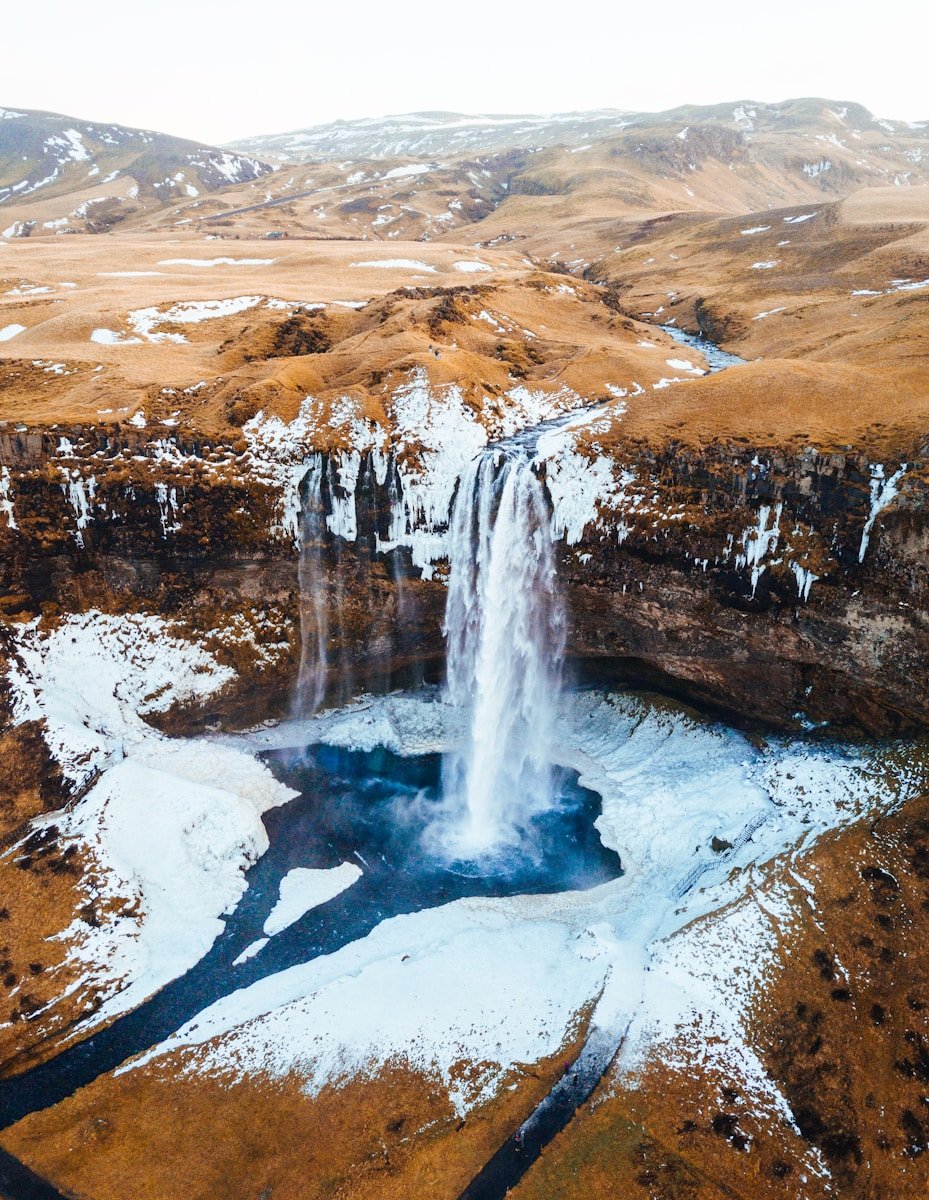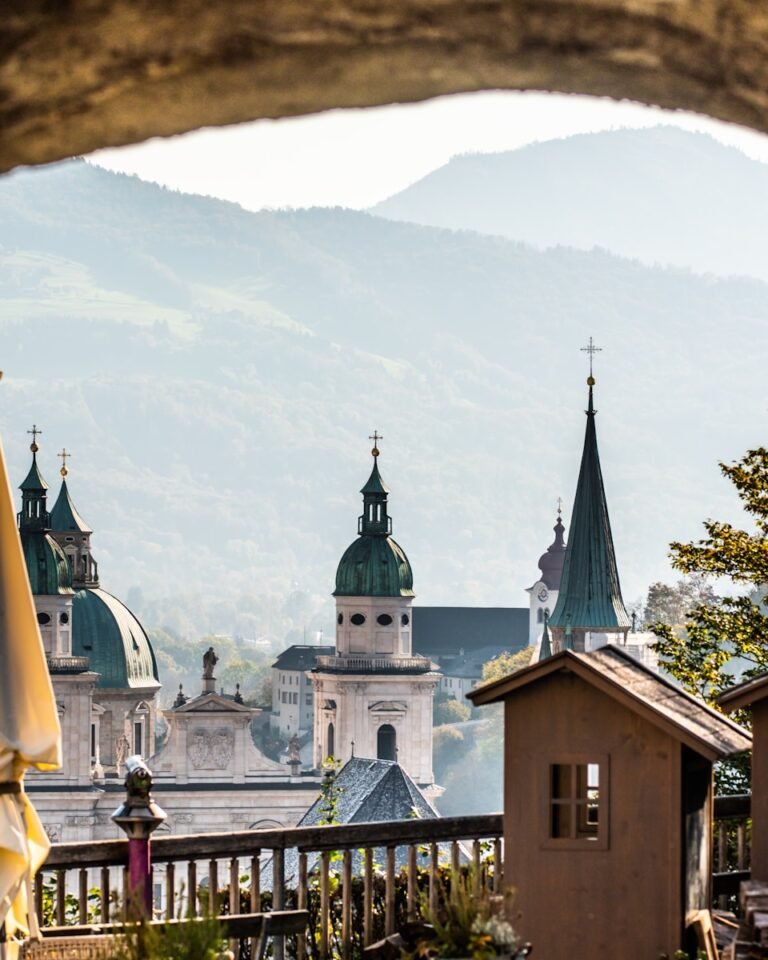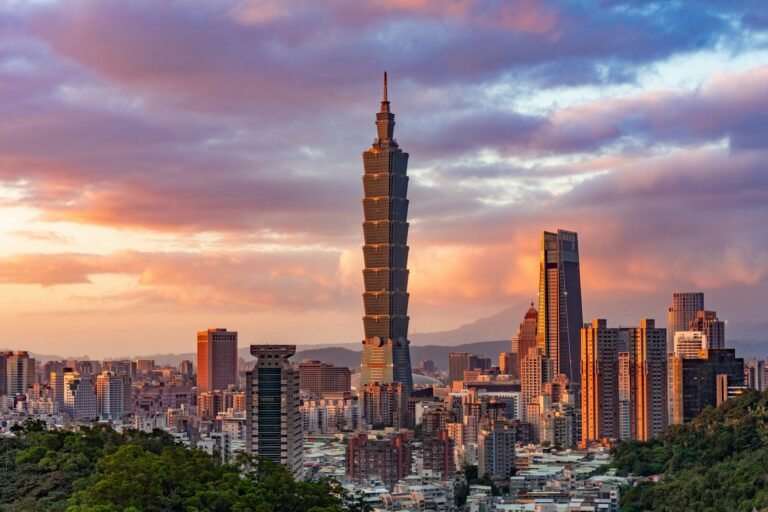Digital Nomad Visa Iceland: Everything You Need to Know in 2025
Ever dreamed of working remotely while surrounded by Iceland’s breathtaking landscapes? The Digital Nomad Visa in Iceland makes this a reality! Whether you crave the Northern Lights, geothermal hot springs, or Reykjavik’s unique city vibe, this visa could be your ticket to an unforgettable remote work experience. But what does it take to get one? Let’s break it down.
What is the Iceland Digital Nomad Visa?
If you’ve ever dreamed of working remotely from a place with epic landscapes, northern lights, and hot springs, Iceland might be calling your name. The Iceland Digital Nomad Visa, officially known as the Long-Term Remote Work Visa, allows non-EEA/EFTA remote workers to live and work in Iceland for up to six months.
Who is it for?
This visa is specifically designed for digital nomads, freelancers, and remote employees who want to experience life in Iceland without committing to permanent residency. Unlike many other digital nomad visas, Iceland’s version is strictly for those who work for a foreign employer or run a business based outside of Iceland. That means you can’t take on local clients or seek Icelandic employment while you’re there.
Key Benefits
- Live legally in Iceland while continuing to work remotely.
- Stay for up to 6 months, which is longer than the typical tourist visa.
- No local taxes—since you’re not working for an Icelandic company, you won’t be taxed in Iceland.
- Enjoy Iceland’s high quality of life with its strong infrastructure, safety, and natural beauty.
Why Iceland?
If you’re the type of digital nomad who craves adventure and nature, Iceland offers something truly unique. You get to work remotely while being surrounded by glaciers, black sand beaches, and volcanic landscapes. Plus, Iceland has one of the fastest internet speeds in the world, making it ideal for remote work.
This visa gives you the chance to experience Icelandic culture, explore the outdoors, and enjoy a peaceful work-life balance—all without the usual visa headaches that come with relocating long-term.
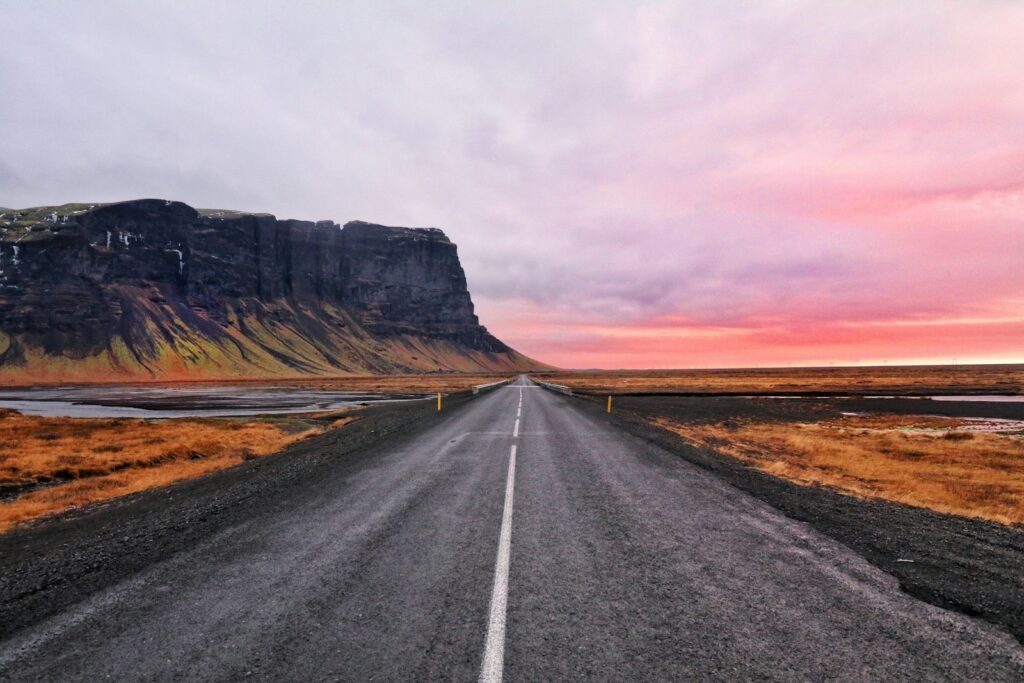
Eligibility Requirements
Iceland’s Digital Nomad Visa isn’t open to everyone, and there are a few key requirements you’ll need to meet before packing your bags for Reykjavík. Unlike some other digital nomad visas with lower barriers to entry, Iceland has fairly strict criteria, especially when it comes to income. Here’s what you need to qualify.
Who Can Apply?
To be eligible for the Long-Term Remote Work Visa, you must:
- Be a non-EEA/EFTA citizen – This visa is only available to remote workers who are not from the European Economic Area (EEA), European Free Trade Association (EFTA), or Switzerland. If you’re from an EU country, you already have the right to live and work in Iceland without a special visa.
- Have proof of remote work – You must either:
- Be employed by a foreign company (outside of Iceland).
- Be self-employed with a business registered outside of Iceland.
- Work as a freelancer with contracts from non-Icelandic clients.
- Meet the income requirement – Iceland has one of the highest income thresholds for a digital nomad visa. You’ll need to show that you earn:
- At least ISK 1,000,000 per month (roughly $7,300 USD).
- If applying with a spouse or partner, the requirement increases to ISK 1,300,000 per month (about $9,500 USD).
- This amount ensures you can cover Iceland’s high cost of living without relying on local employment.
Additional Requirements
Beyond proving you’re a legitimate remote worker with a stable income, there are a few more conditions:
- You must not have held an Icelandic long-term visa in the past 12 months – If you’ve already used this visa before, you’ll have to wait before applying again.
- You need valid health insurance – Iceland requires all applicants to have international health insurance that covers their stay. Healthcare in Iceland is excellent, but it’s not cheap, so make sure your plan includes medical coverage, emergencies, and hospitalization.
- Your passport must be valid for at least three months beyond your intended stay – While this is a standard visa requirement in many countries, it’s important to double-check before applying.
Is This Visa Right for You?
Iceland’s digital nomad visa is perfect if you meet the income requirements and want a short-term adventure in one of the world’s most unique landscapes. However, if your budget is tight, Iceland’s high cost of living might make this visa less practical compared to options in countries like Portugal, Spain, or Thailand.
If you qualify, though, this visa lets you live and work legally in Iceland without local taxes while enjoying everything from geothermal hot springs to midnight sun in the summer and northern lights in the winter.
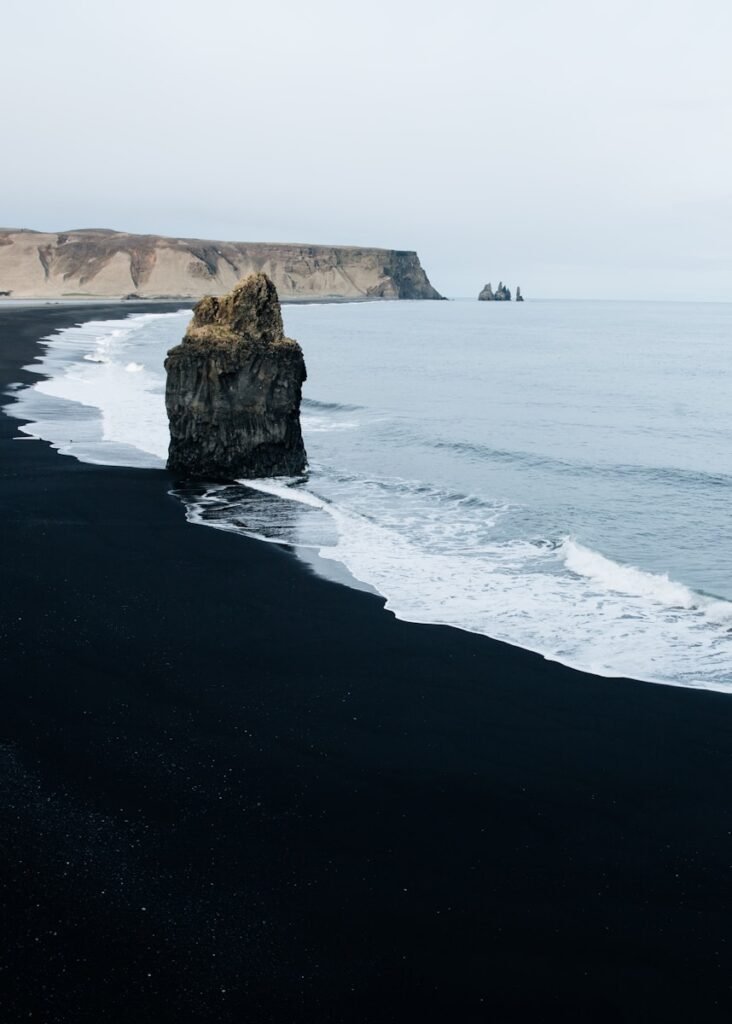
How to Apply for the Iceland Digital Nomad Visa
Applying for the Iceland Digital Nomad Visa is pretty straightforward, but you’ll need to make sure you have all the right paperwork in place before submitting your application. Unlike some other digital nomad visas that allow you to apply entirely online, Iceland’s process requires a bit more preparation. Here’s everything you need to know to apply and get approved.
Step 1: Gather Your Documents
Before submitting your application, make sure you have all the required documents. Missing paperwork can slow down the process or even result in a rejection, so double-check everything before applying.
Required Documents:
- Passport copy – Your passport must be valid for at least six months beyond your intended stay in Iceland.
- Employment verification letter – If you’re employed, you need a letter from your employer confirming that you work remotely and that your job does not require you to be physically present in any specific location.
- Proof of self-employment or freelance work – If you’re self-employed or a freelancer, you’ll need to provide documentation such as:
- Business registration documents
- Client contracts
- Proof of income from freelance work
- Proof of income – Since Iceland has a high minimum income requirement, you’ll need to submit:
- Recent bank statements showing consistent income
- Tax returns from the past year
- Client contracts or invoices proving ongoing work
- Health insurance certificate – You must show proof of comprehensive health insurance that covers you for the full duration of your stay in Iceland.
- Completed application form – You can download the form from the Iceland Directorate of Immigration’s website and fill it out before submission.
Step 2: Submit Your Application
Once you have all your documents ready, you can submit your application. Unlike some digital nomad visas that are entirely online, Iceland’s process involves a few different options for submission.
Where to Apply:
- By mail – You can send your completed application and supporting documents directly to the Iceland Directorate of Immigration in Reykjavík.
- At an Icelandic embassy or consulate – If you prefer, you can submit your application at an Icelandic consulate or embassy in your country.
- In person (if already in Iceland) – If you’re already in Iceland on a tourist visa, you may be able to submit your application at the Directorate of Immigration.
Step 3: Pay the Application Fee
Once you’ve submitted your application, you’ll need to pay the visa processing fee. Make sure to include proof of payment with your application to avoid delays.
- Application fee: ISK 12,200 (approximately $90 USD)
- Payment methods vary depending on how you apply, but typically include bank transfer or direct payment at the consulate/embassy.
Step 4: Wait for Processing
After submitting your application, you’ll need to wait for the Iceland Directorate of Immigration to process it. The standard processing time is:
- 4 to 6 weeks – If all your documents are in order.
- Longer if additional information is requested – If anything is missing, the immigration office may ask for more documents, which can slow down the process.
You cannot start working remotely from Iceland until your visa is approved, so make sure to apply well in advance if you’re planning a move.
Step 5: Receive Your Visa & Move to Iceland
Once your visa is approved, you’re all set! You’ll receive confirmation, and then you can:
- Book your flight – Get ready to experience Iceland’s stunning landscapes, cozy cafés, and outdoor adventures.
- Find accommodation – Whether you’re planning to stay in Reykjavík or somewhere more remote, now’s the time to look for a place to stay.
- Register with local authorities (if required) – Depending on your length of stay, you may need to register your residence in Iceland.
- Start your digital nomad journey – Enjoy life in one of the world’s most unique and breathtaking destinations while working remotely.
If you meet the requirements and are comfortable with Iceland’s high cost of living, this visa is a fantastic way to experience life in one of the most beautiful countries in the world.
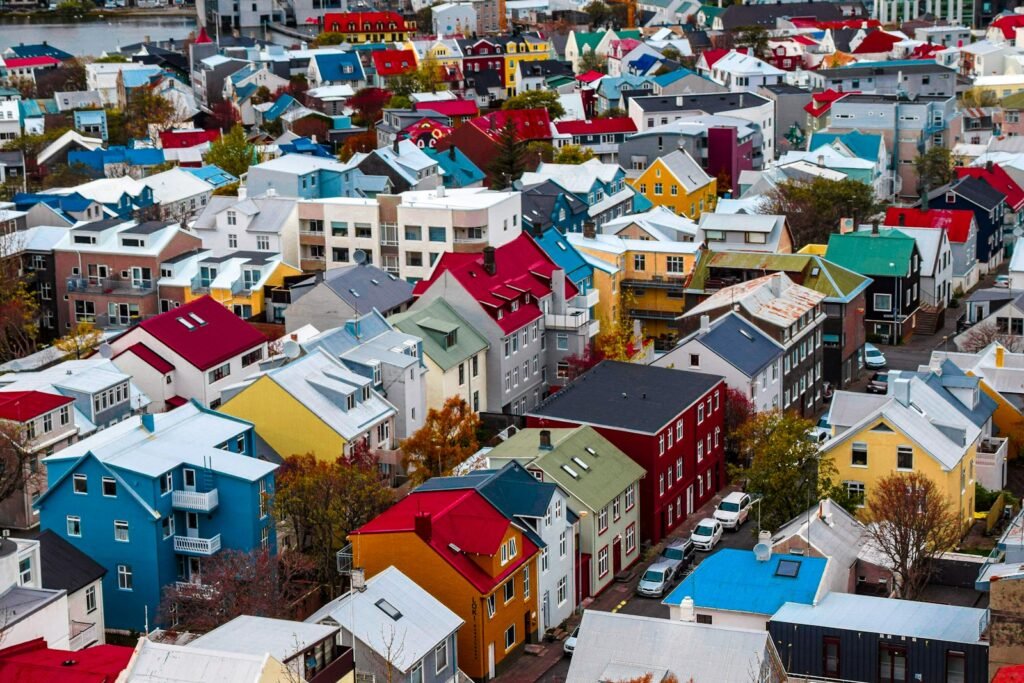
Cost of Living in Iceland for Digital Nomads
Iceland is an incredible place to live, but let’s be real—it’s also one of the most expensive countries in the world. Whether you’re planning a six-month digital nomad stay or just scoping it out for a longer-term move, it’s important to understand the cost of living before committing. From housing and food to transportation and leisure, here’s what you can expect when budgeting for your stay in Iceland.
Housing Costs in Iceland
Housing will likely be your biggest expense as a digital nomad in Iceland, especially if you plan to stay in Reykjavík, where most remote workers settle. Rental prices can be high, but there are ways to save if you plan ahead.
Rental Prices:
- 1-bedroom apartment in Reykjavík: ISK 200,000–300,000 ($1,500–$2,200 USD) per month
- Furnished studio in the city center: ISK 250,000+ ($1,800+ USD) per month
- Larger apartments (2-3 bedrooms): ISK 350,000+ ($2,500+ USD) per month
Alternative Housing Options:
- Shared housing – Renting a room in a shared apartment can cut your costs significantly. Expect to pay around ISK 100,000–150,000 ($750–$1,100 USD) per month.
- Airbnb or short-term rentals – If you’re only staying a few months, Airbnb and short-term rentals are convenient but often more expensive than long-term leases.
- Rural accommodations – If you’re open to living outside Reykjavík, rental prices can be 20-40% cheaper in smaller towns. However, access to co-working spaces, cafés, and social life may be limited.
Food & Grocery Costs
Eating in Iceland is expensive, whether you’re cooking at home or dining out. Since most food is imported, grocery prices are higher than in many other countries. Eating out regularly will drain your budget quickly, so plan for a mix of cooking and occasional meals at restaurants.
Grocery Costs (Monthly Estimate):
- Basic groceries: ISK 30,000–50,000 ($220–$370 USD) per person
- Milk (1L): ISK 200 ($1.50 USD)
- Eggs (12-pack): ISK 900 ($7 USD)
- Chicken breast (1kg): ISK 2,500 ($18 USD)
- Bread (loaf): ISK 600 ($4.50 USD)
- Local cheese (1kg): ISK 1,500–2,000 ($11–$15 USD)
Eating Out:
- Casual meal at a restaurant: ISK 3,000–5,000 ($22–$37 USD)
- Fast food (burger & fries): ISK 2,500 ($18 USD)
- Cappuccino at a café: ISK 650–900 ($5–$7 USD)
- Beer at a bar: ISK 1,200–1,500 ($9–$11 USD)
Money-saving tip: If you want to cut down on food expenses, shop at Bonus or Krónan, Iceland’s budget grocery stores.
Transportation Costs
Getting around Iceland depends on where you live and how much you plan to explore. Public transport is affordable in Reykjavík, but many digital nomads rent cars for weekend trips to explore the country.
Public Transportation in Reykjavík:
- Single bus ticket: ISK 590 ($4.50 USD)
- Monthly public transport pass: ISK 13,000 ($95 USD)
Car Rental & Fuel Costs:
- Car rental: ISK 40,000–70,000 ($300–$500 USD) per week for a basic vehicle
- Gasoline: ISK 350 per liter ($10 per gallon)
Other Transport Options:
- Biking – Reykjavík is bike-friendly, and you can buy a second-hand bike for ISK 30,000–60,000 ($220–$450 USD).
- Taxis – Taxis are extremely expensive, with a short ride costing around ISK 3,000+ ($22+ USD).
If you’re planning weekend road trips (which you absolutely should), renting a 4×4 vehicle is recommended—especially in winter when road conditions can be unpredictable.
Other Expenses to Consider
Coworking Spaces & Internet
- Coworking membership: ISK 30,000–50,000 ($220–$370 USD) per month
- Home internet (fiber optic): ISK 10,000–15,000 ($75–$110 USD) per month
- Mobile data plan: ISK 5,000–8,000 ($37–$60 USD) per month
Entertainment & Leisure
- Gym membership: ISK 9,000–12,000 ($65–$90 USD) per month
- Cinema ticket: ISK 2,000–2,500 ($15–$18 USD)
- Swimming pools (a local favorite): ISK 1,000–1,500 ($7–$11 USD) per visit
Outdoor Activities & Travel
- Blue Lagoon entry fee: ISK 8,500–11,000 ($65–$85 USD)
- Northern Lights tours: ISK 10,000–15,000 ($75–$110 USD)
- Golden Circle tour: ISK 15,000–20,000 ($110–$150 USD)
Budgeting Tips for Digital Nomads in Iceland
- Plan your housing in advance – Finding affordable rentals can be challenging, so book early or consider shared housing.
- Shop at budget grocery stores – Avoid high-end supermarkets to save on food expenses.
- Use public transport when possible – Renting a car is expensive, so only do it for weekend trips.
- Consider a coworking space – While WiFi is available in cafés, coworking spaces offer better facilities for remote work.
- Take advantage of free outdoor activities – Hiking, hot springs, and stunning nature won’t cost you a dime.
Is Iceland Affordable for Digital Nomads?
Iceland is not the cheapest digital nomad destination, but it offers a high quality of life, incredible nature, and fast internet. If you have a stable remote income, plan your expenses wisely, and are comfortable with higher living costs, Iceland is an amazing place to experience for a few months.
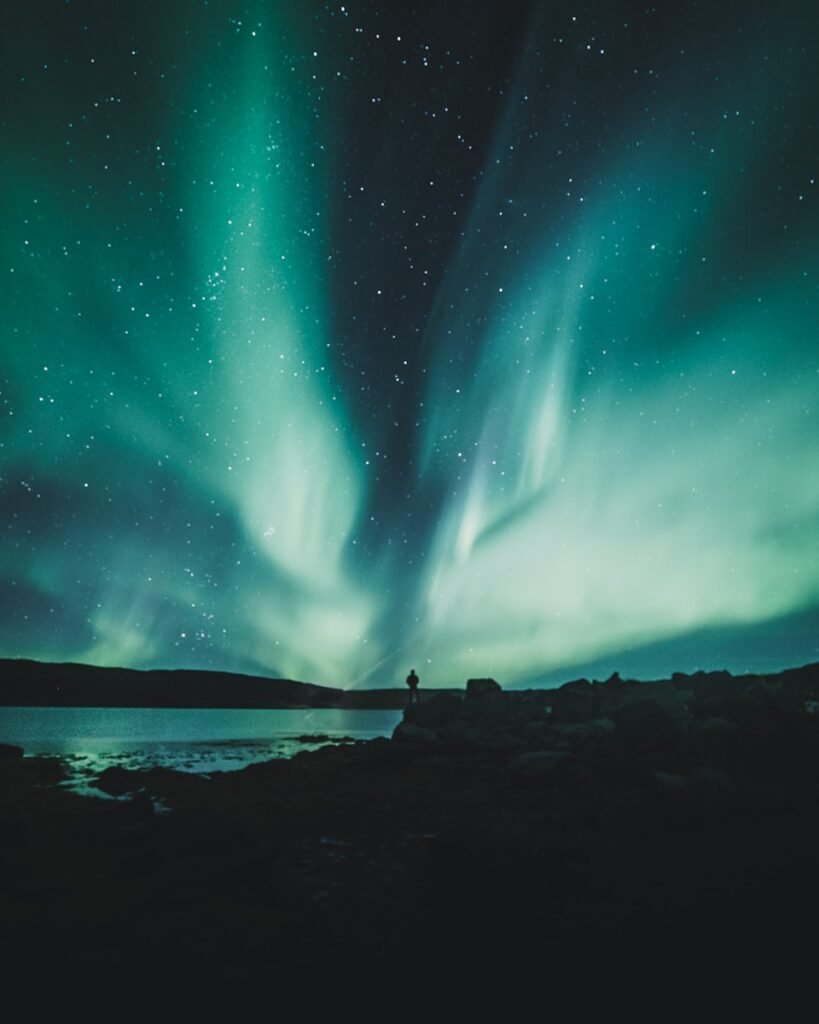
Best Places to Live in Iceland as a Digital Nomad
Iceland might not have a huge selection of cities to choose from, but each location offers a unique lifestyle and vibe for digital nomads. Whether you want a bustling café culture, stunning fjord views, or total isolation in nature, there’s a place for you. Here are some of the best spots to set up your remote work base in Iceland.
Reykjavík – The Digital Nomad Hub
Reykjavík is the undisputed best place for digital nomads in Iceland. It’s the most developed city, has the fastest internet, and offers tons of cafés and coworking spaces. If you need a balance between city life and nature, Reykjavík is your best bet.
Why Live in Reykjavík?
- Strong expat & digital nomad community – You won’t feel alone here, as many remote workers and expats call Reykjavík home.
- Fast internet speeds – Iceland has some of the best internet in the world, and Reykjavík is no exception.
- Plenty of coworking spaces – Places like Innovation House, Regus, and The Reykjavík Coworking Unit are great for networking and productivity.
- Lively social scene – From cozy cafés to bustling bars, Reykjavík has a surprisingly active nightlife.
- Easy access to nature – The famous Golden Circle, Blue Lagoon, and even the Northern Lights are just a short drive away.
Best Areas to Live in Reykjavík
- Downtown (Miðborg) – If you want to be in the heart of the action, this is where you’ll find the best restaurants, bars, and coworking spaces.
- Vesturbær – A quieter, more residential area close to downtown but with easy access to cafés and the harbor.
- Laugardalur – Great for nature lovers, with parks, a swimming pool, and a peaceful atmosphere.
Cost of Living in Reykjavík
- 1-bedroom apartment in the city center: ISK 250,000+ ($1,800+ USD) per month
- Coworking membership: ISK 30,000–50,000 ($220–$370 USD) per month
- Public transport pass: ISK 13,000 ($95 USD) per month
If you want the best mix of city life, remote work opportunities, and easy access to Iceland’s natural beauty, Reykjavík is the best choice.
Akureyri – Iceland’s Northern Gem
If Reykjavík is too busy or expensive, Akureyri is the next best option. This small city in North Iceland is packed with charm, stunning fjords, and a slower pace of life.
Why Live in Akureyri?
- Lower cost of living – Compared to Reykjavík, housing and daily expenses are more affordable.
- Breathtaking landscapes – Surrounded by mountains and fjords, Akureyri offers some of the best views in Iceland.
- Smaller-town feel – If you prefer quieter places with fewer tourists, this is the perfect spot.
- Easy access to outdoor activities – Hiking, skiing, and whale watching are all possible right outside your doorstep.
Best Areas to Live in Akureyri
- Downtown Akureyri – A charming small-town center with cafés, restaurants, and a coworking space.
- Glerárhverfi – A quieter residential area close to the mountains and nature.
Cost of Living in Akureyri
- 1-bedroom apartment: ISK 180,000–250,000 ($1,300–$1,800 USD) per month
- Public transport: Free within Akureyri
- Coffee at a café: ISK 600–900 ($5–$7 USD)
If you love small-town vibes and incredible nature, Akureyri is a fantastic place for digital nomads.
Selfoss – Close to Nature, Close to Reykjavík
Selfoss is a great middle-ground between the bustle of Reykjavík and the tranquility of the Icelandic countryside. Located only 45 minutes from Reykjavík, it’s a great option if you want lower rent and more space while still being within reach of the capital.
Why Live in Selfoss?
- More affordable rent – Housing prices here are lower than in Reykjavík.
- Quiet and peaceful – A great place for focused work without distractions.
- Great location – Close to Geysir, Gullfoss, and Þingvellir National Park.
- Local community – Less touristy, with a strong Icelandic feel.
Cost of Living in Selfoss
- 1-bedroom apartment: ISK 150,000–200,000 ($1,100–$1,500 USD) per month
- Public transport: Limited, so having a car is recommended
- Coworking spaces: Not many options, but you can work from cafés or set up a home office
If you want peace, affordability, and easy access to Iceland’s best sights, Selfoss is a great option.
Remote Countryside Cabins – Total Isolation & Breathtaking Views
For the ultimate escape, renting a cabin in the Icelandic countryside is a dream come true for some digital nomads. Imagine waking up to majestic waterfalls, volcanic landscapes, and absolute peace.
Why Live in a Remote Cabin?
- Unmatched natural beauty – Live in one of the most scenic places on Earth.
- No distractions – If you’re working on a deep-focus project, this is the perfect setup.
- Affordable options – In some areas, rent is cheaper than in Reykjavík.
Challenges of Remote Living in Iceland
- Internet can be slow – Some remote areas have limited WiFi, so check before committing.
- Harsh winters – Snow, strong winds, and long nights can be tough.
- Limited social life – If you thrive on meeting people, rural living might feel lonely.
Best Areas for Remote Cabins
- South Iceland – Near waterfalls and black sand beaches, but still within a few hours of Reykjavík.
- Snæfellsnes Peninsula – Stunning landscapes and some of Iceland’s most famous sights.
- East Fjords – A hidden gem with fewer tourists and incredible views.
If you’re looking for solitude, inspiration, and total immersion in nature, a remote cabin might be your perfect Icelandic home.

Which Icelandic City is Best for You?
Choosing the right place to live as a digital nomad in Iceland depends on your lifestyle, work needs, and how much you want to be surrounded by people—or nature. Each location has its own pros and cons, so it’s all about finding what suits you best.
Reykjavík – The Best Mix of City Life and Remote Work
If you need fast WiFi, coworking spaces, and a solid social scene, Reykjavík is hands down the best place to base yourself. It’s where you’ll find the most cafés, networking opportunities, and expat communities, making it a top choice for digital nomads.
Is Reykjavík Right for You?
✔ You want urban comforts while living in Iceland.
✔ You enjoy having co-working spaces, cafés, and nightlife nearby.
✔ You need fast, reliable internet and a strong remote work community.
✔ You want to be close to international travel connections (Keflavík Airport is 45 minutes away).
✔ You don’t mind higher rent prices in exchange for convenience.
What Might Not Work for You?
✖ Reykjavík can feel touristy and expensive, especially in the city center.
✖ Housing can be competitive, so finding an apartment takes time.
👉 Best for: Digital nomads who want a balance of work, social life, and nature without sacrificing internet speed and community.
Akureyri – A Smaller, More Affordable Alternative
If Reykjavík feels too busy or expensive, Akureyri is a great second option. It’s often called the “Capital of the North”, but it’s much smaller, quieter, and closer to some of Iceland’s most stunning landscapes.
Is Akureyri Right for You?
✔ You prefer a small-town feel with a lower cost of living.
✔ You love mountains, fjords, and easy access to outdoor adventures.
✔ You don’t mind fewer coworking spaces, as long as you have good WiFi.
✔ You enjoy being part of a tight-knit community rather than a big expat scene.
✔ You don’t mind cold winters, since Akureyri gets more snow than Reykjavík.
What Might Not Work for You?
✖ Fewer networking opportunities and coworking spaces compared to Reykjavík.
✖ Internet speeds might not be as fast in some areas.
✖ It’s far from Reykjavík and Keflavík Airport, so traveling in and out can take more time.
👉 Best for: Digital nomads who want a slower, more affordable lifestyle with stunning fjord views and fewer tourists.
Selfoss – Close to Nature, Close to Reykjavík
Selfoss is a great middle-ground option if you want affordable housing, a peaceful environment, and easy access to Reykjavík. It’s about a 45-minute drive from the capital, making it convenient but quieter.
Is Selfoss Right for You?
✔ You want to live near nature but still be close to Reykjavík.
✔ You prefer a quieter town with fewer tourists.
✔ You enjoy outdoor activities like hiking, hot springs, and exploring waterfalls.
✔ You need a more affordable rental market compared to Reykjavík.
✔ You’re okay with limited coworking spaces and working from home or cafés.
What Might Not Work for You?
✖ You’ll probably need a car to get around, as public transport options are limited.
✖ Fewer social events and networking opportunities compared to Reykjavík.
👉 Best for: Digital nomads who prioritize nature and affordability but still want access to city life when needed.
Remote Cabins – Ultimate Peace and Isolation
If you dream of working from a cozy cabin, surrounded by glaciers, waterfalls, or black sand beaches, then Iceland’s remote countryside might be the perfect place. It’s the ultimate digital detox, but it comes with its own challenges.
Is Remote Cabin Life Right for You?
✔ You love solitude, deep focus, and being surrounded by nature.
✔ You don’t need fast internet all the time (or you have a solid backup plan).
✔ You’re happy living off the grid, possibly with limited access to stores and restaurants.
✔ You want to be completely immersed in Iceland’s landscapes.
✔ You have a car, since public transport won’t be an option.
What Might Not Work for You?
✖ Internet can be slow or unreliable in some rural areas.
✖ Winters can be harsh, with limited daylight and heavy snow.
✖ The cost of living can be high if you’re far from grocery stores and need to stock up.
✖ It can feel lonely if you don’t enjoy spending time alone.
👉 Best for: Digital nomads who love remote work, don’t need a big social scene, and want to live in one of the most breathtaking places on Earth.
So, Where Should You Live in Iceland?
Still unsure where to go? Here’s a quick breakdown based on what matters most to you:
🏙 Want fast WiFi, coworking spaces, and city life? → Reykjavík
🌊 Want stunning fjords, a small-town feel, and lower costs? → Akureyri
🌿 Want nature, peace, and easy access to Reykjavík? → Selfoss
🏡 Want total solitude, breathtaking landscapes, and zero distractions? → Remote cabin life
No matter where you choose, Iceland is an incredible place for digital nomads. The combination of natural beauty, strong internet infrastructure, and unique lifestyle opportunities makes it one of the most fascinating places to live and work remotely.
Internet & Co-Working Spaces in Iceland
One of the biggest concerns for digital nomads moving to Iceland is whether the internet is fast and reliable enough for remote work. The good news? Iceland has some of the best internet infrastructure in the world, even in some remote areas.
How Fast is the Internet in Iceland?
Iceland ranks among the top countries for internet speed and connectivity, making it a great place for remote workers who rely on video calls, large file transfers, or cloud-based work.
- Average download speed: 150 Mbps
- High-speed fiber optic in cities: Up to 1 Gbps
- 4G/LTE mobile network coverage: Strong, even in rural areas
- 5G expanding: Available in Reykjavík and some other major towns
If you plan to work from rural areas or remote cabins, it’s a good idea to check the exact internet availability before booking long-term accommodation. Some locations might have slower speeds, but you can use Starlink or mobile data hotspots as backup options.
Best Co-Working Spaces in Iceland
While Iceland’s digital nomad scene isn’t as big as in places like Bali or Lisbon, you can still find some great co-working spaces in Reykjavík and other key locations.
1. Innovation House Reykjavik
If you’re looking for a proper co-working space with a strong entrepreneurial community, Innovation House is a great choice. It offers high-speed internet, meeting rooms, and networking opportunities, making it ideal for digital nomads who want to connect with other professionals.
✔ Location: Reykjavík
✔ Perks: Fast WiFi, office facilities, networking events
2. Kex Hostel’s Work-Friendly Café
This might not be a dedicated co-working space, but Kex Hostel has a super chill café and lounge area that’s perfect for getting work done. The WiFi is strong, and the atmosphere is lively but not too distracting. Plus, you can grab a coffee or a beer while working.
✔ Location: Reykjavík
✔ Perks: Cozy atmosphere, good food and drinks, free WiFi
3. Hlutverkasetur Co-Working Hub
A hidden gem in Reykjavík, this co-working hub offers a quiet and productive environment for remote workers. It’s more low-key and affordable than some of the bigger spaces, making it a great option if you prefer a distraction-free work environment.
✔ Location: Reykjavík
✔ Perks: Affordable rates, quiet space, strong WiFi
Other Work-Friendly Spaces in Iceland
Even if you don’t want to commit to a full-time co-working space, you’ll still find plenty of places where you can set up your laptop for a few hours.
Cafés with Good WiFi in Reykjavík
Most cafés in Iceland offer free WiFi, and some are better suited for remote work than others. A few popular options include:
☕ Kaffihús Vesturbæjar – A cozy spot with a relaxed atmosphere and strong WiFi.
☕ Reykjavik Roasters – One of Iceland’s best specialty coffee spots with a great work environment.
☕ Kaffitár – A local coffee chain with several locations that are remote work-friendly.
Libraries with Free WiFi
If you prefer a quieter workspace, Iceland’s public libraries are a great option. They usually offer fast internet, workspaces, and charging stations.
📚 Reykjavík City Library – A spacious library with work desks, free WiFi, and a peaceful setting.
📚 Akureyri Municipal Library – A solid option in the north for those staying in Akureyri.
Working Remotely in Rural Iceland
If you’re thinking of living outside Reykjavík, co-working spaces will be harder to find. Instead, your best options are:
- Renting an Airbnb with a dedicated workspace
- Using mobile hotspots or Starlink for internet access
- Working from local cafés or libraries where available
Despite the remote nature of Iceland, internet access is surprisingly good in most places, making it one of the best off-the-beaten-path digital nomad destinations.
Pros & Cons of the Iceland Digital Nomad Visa
Like any digital nomad visa, Iceland’s Long-Term Remote Work Visa comes with its own set of advantages and challenges. If you’re considering making Iceland your home base for remote work, it’s important to weigh both the pros and cons before making the move.
Pros of the Iceland Digital Nomad Visa
Breathtaking Natural Landscapes & Outdoor Adventures
If you love nature, hiking, and adventure, Iceland is one of the most stunning places in the world to live. You’ll be surrounded by volcanoes, glaciers, waterfalls, and hot springs—all just a short drive from wherever you are. On weekends, you can go chasing the Northern Lights, exploring lava caves, or soaking in natural geothermal pools.
Safe, Peaceful, and Friendly Community
Iceland consistently ranks as one of the safest countries in the world. Crime rates are extremely low, and the people are generally friendly, welcoming, and helpful. If you’re a solo traveler or someone who values personal safety, Iceland is a great place to live.
High-Quality Healthcare & Public Services
Iceland has a top-tier healthcare system, even for temporary residents. If you need medical assistance while staying in the country, you’ll have access to modern hospitals and clinics with well-trained professionals. Public services, infrastructure, and transportation are also well-maintained.
One of the World’s Fastest Internet Speeds
For remote workers and digital entrepreneurs, Iceland’s internet speed is a major advantage. With an average of 150 Mbps and access to 1 Gbps fiber-optic connections, you won’t have to worry about slow video calls, buffering, or unreliable connections.
Unique Cultural Experiences & Festivals
Living in Iceland gives you access to some incredible cultural events. From the famous Iceland Airwaves Music Festival to the Midnight Sun celebrations and the Reykjavík International Film Festival, there’s always something happening. You’ll also get to experience Icelandic traditions, like celebrating Þorrablót (the Viking midwinter feast) and Jólabókaflóð (the Christmas book flood tradition).
Cons of the Iceland Digital Nomad Visa
High Cost of Living
Iceland is one of the most expensive countries in the world. Everything from rent and groceries to eating out and transportation costs more compared to most other digital nomad destinations. For example:
- Rent for a one-bedroom apartment in Reykjavík: $1,500–$2,200 per month
- Grocery costs per month: $220–$370
- Public transport pass: $95 per month
- Eating out: Expect to pay around $22–$37 for a simple meal
If you’re used to affordable digital nomad hubs like Thailand, Mexico, or Portugal, the prices in Iceland might be a shock.
Cold, Dark Winters with Limited Daylight
Iceland’s winters are long, dark, and cold. Between November and January, the country gets as little as 3-5 hours of daylight per day. If you’re sensitive to seasonal affective disorder (SAD) or struggle with dark winters, this can be a challenge.
On the flip side, summers in Iceland bring endless daylight, with the Midnight Sun keeping the sky bright for nearly 24 hours.
Remote Location & Limited Travel Options
Iceland is quite isolated, which means traveling in and out of the country can be expensive and time-consuming. There are direct flights to Europe and North America, but options are limited compared to major travel hubs. If you love hopping between different countries as a digital nomad, Iceland might feel a bit too remote.
Strict Visa Requirements & High Income Threshold
Unlike some other digital nomad visas, Iceland has a high income requirement:
- ISK 1,000,000 per month (around $7,300 USD) for individuals
- ISK 1,300,000 per month (around $9,500 USD) for couples
This is one of the highest financial requirements for any digital nomad visa worldwide, making it less accessible to freelancers or those with lower incomes. Additionally, you must have valid health insurance and cannot have held an Icelandic long-term visa in the past 12 months.
Is the Iceland Digital Nomad Visa Worth It?
If you have a high enough income and are looking for a safe, beautiful, and peaceful place to work remotely, Iceland can be an amazing experience. However, if you’re on a budget or prefer a more connected nomad lifestyle, the cost of living and isolation might make it a less ideal choice.
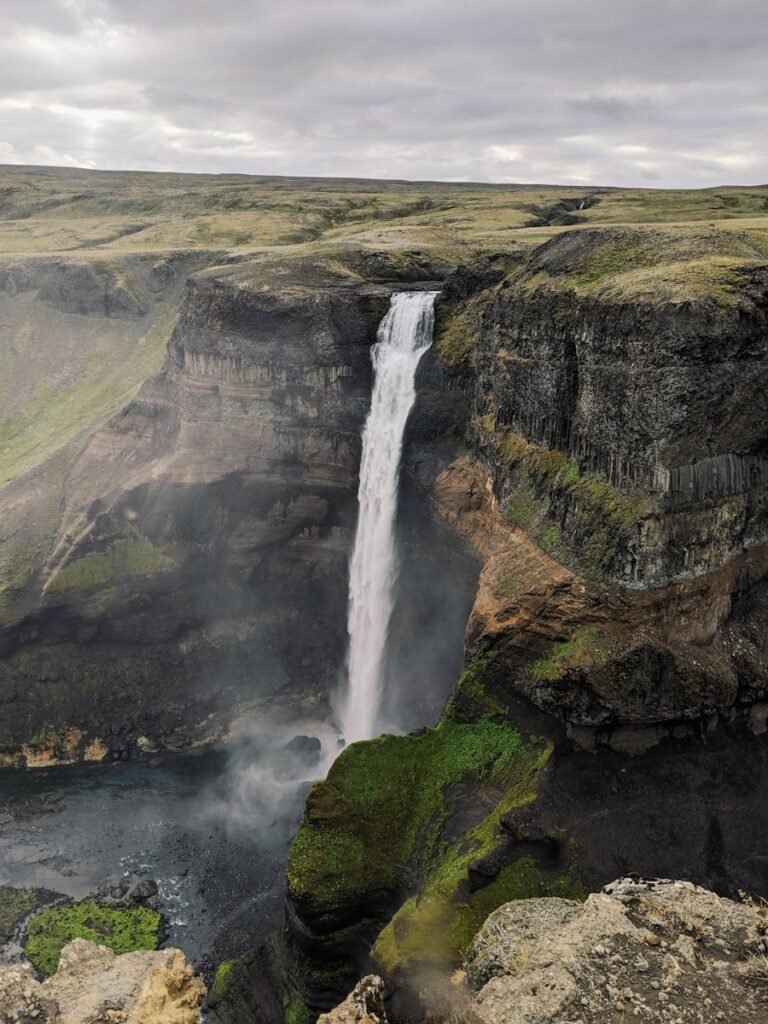
Is the Iceland Digital Nomad Visa Worth It?
Iceland is not your typical digital nomad hotspot. Unlike Bali, Thailand, or Mexico, where costs are low and the sun shines year-round, Iceland offers a completely different kind of experience. If you love adventure, breathtaking scenery, and a peaceful, safe environment, this could be one of the most rewarding places to live and work remotely.
However, it’s not for everyone. The high cost of living, strict income requirements, and long, dark winters can be deal-breakers for some digital nomads. Before making the move, ask yourself:
Who is the Iceland Digital Nomad Visa Perfect For?
✅ High-earning remote workers and entrepreneurs – If you meet the $7,300/month income requirement, Iceland gives you access to excellent infrastructure, fast internet, and a strong economy.
✅ Nature lovers and outdoor enthusiasts – If you dream of hiking, exploring glaciers, chasing waterfalls, and soaking in natural hot springs, Iceland’s landscapes will blow your mind.
✅ People looking for safety and stability – Iceland is one of the safest countries in the world, with an excellent healthcare system and friendly locals.
✅ Digital nomads who prefer a slower pace of life – If you want to escape crowded cities and busy nomad hubs, Iceland’s peaceful atmosphere and small communities can be a refreshing change.
Who Might Struggle with the Iceland Digital Nomad Visa?
❌ Freelancers or remote workers with lower incomes – The high income requirement and cost of living make Iceland one of the most expensive nomad destinations.
❌ People who need warm weather and sunshine – If you struggle with cold, dark winters, Iceland’s limited daylight during winter months can be challenging.
❌ Nomads who love to travel frequently – Iceland is geographically remote, making it harder (and more expensive) to travel to other countries. If you love hopping between destinations, this might not be the best base.
Should You Apply for the Iceland Digital Nomad Visa?
If you can handle the high costs and remote location, Iceland offers an unparalleled lifestyle with epic scenery, a strong digital infrastructure, and a peaceful environment. It’s a dream destination for digital nomads who love adventure, nature, and quiet living.
If you’re still on the fence, why not visit Iceland for a few weeks before committing to a long-term stay? That way, you can experience the culture, the cost of living, and the lifestyle firsthand before applying for the visa.

